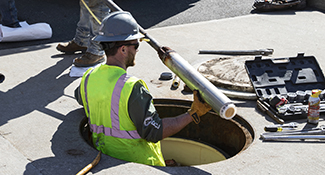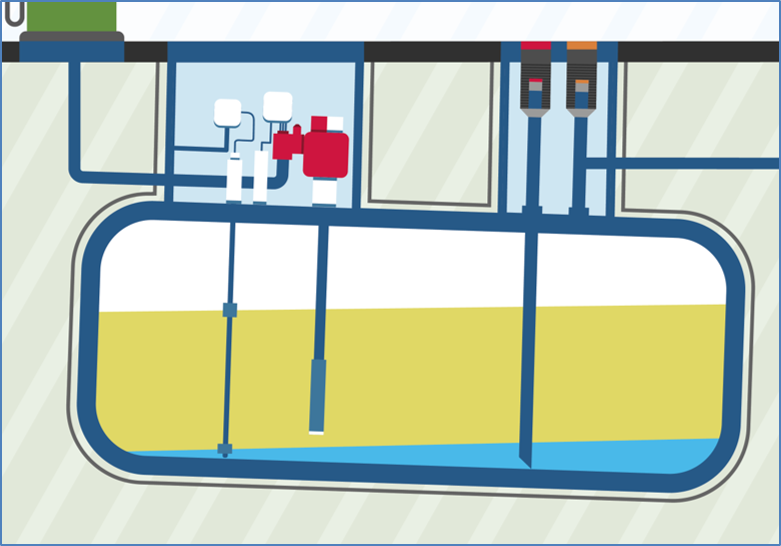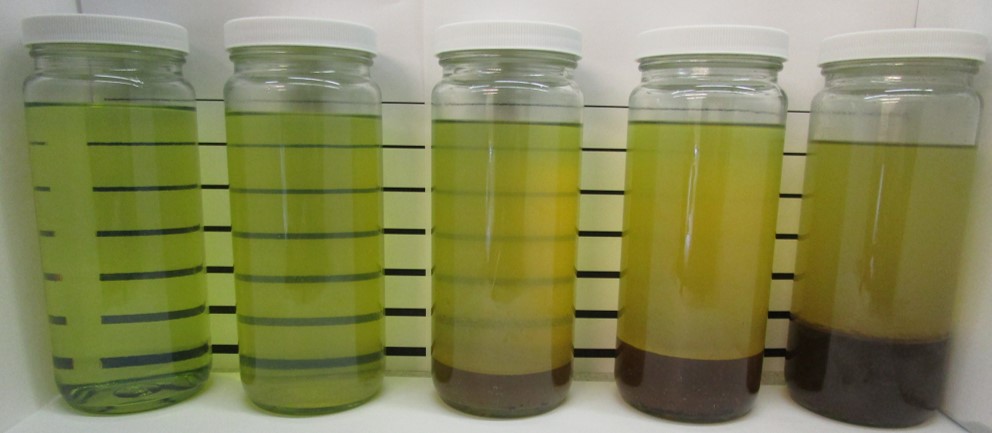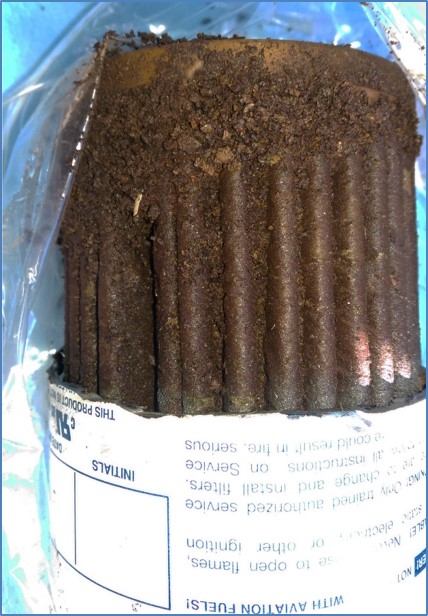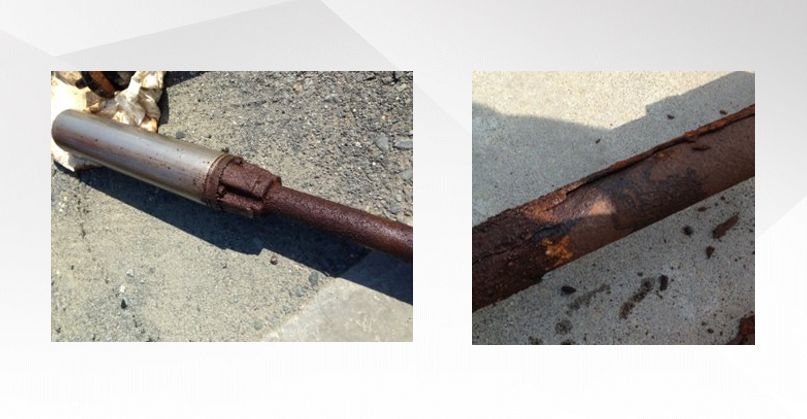Water is insidious
There are many different entry points within the tank for water, and frequently water can go unnoticed, including:
- Leaky dried seals - Any seal has the potential to be a point of water ingress.
- High water tables - A high water table will put pressure on the UST and secondary containment systems and may cause shifting, or impact seals, and allow water ingress.
- Humidity / Condensation - In tanks with high turnover rates, the tanks are pulling in outside air, and without a PV valve, there is going to be humidity pulled into the tank that will then condense.
- Fuel saturation build-up - As fuel is delivered at higher temperatures, it is placed into a cooler underground environment. At a higher temperature, the fuel has a higher water saturation point, so it has a higher capacity to hold water. As it acclimates to the cooler UST environment, the water sheds as the saturation point lowers.
Once in a tank there are certain challenges to determining just how much water is in the tank. This can be exacerbated by the tanks tilt because water will sink to the bottom of the tank. A one degree tilt in a tank can mask up to 32 gallons of water.
Testing for corrosive environments
There are a couple leading indicators and tests that can be used to determine whether the UST environment has become corrosive, including:
- Haze test - Quick visual check used to determine if there is microbial growth or corroded particulates in the fuel.
- Water content testing - Using a standard chemical analysis method, Karl Fischer titration, trace amounts of water can be detected, and a concentration determined.
- Acid number test* - Determines the amount of potassium hydroxide base required to neutralize the acid in one gram of a sample. The acid number measurement detects both weak organic acids and any stronger inorganic acids.
- Measuring pH - The pH is a representation of how corrosive the oil may be in its current state. It is different from the acid number in that it is not a measurement of the concentration of the acid content.
Indicators of corrosion in diesel tanks
Once there is corrosion in an underground storage tank, you will start to see physical indications of corrosion taking place, including:
- Clogged filters - An increase in the frequency that filters clog and need to be changed may indicate corrosion in a diesel tank.
- Vinegar odors - A strong vinegar odor at the nozzle indicates that acetic content is coming through the pump.
- Probe water measurements - Water in the tank is highly correlated with microbial growth, and water content within the tank can be directly monitored through probe measurement.
- Premature valve failures - A buildup of microbial content, or advanced corrosion, can cause valves to malfunction and not actuate when expected. This can be a site safety issue, or severely impact return on investment, if it causes a failure of a critical component of fuel site equipment.
The cost of doing nothing
One of the primary ways that corrosion can affect a fuel site’s bottom line is by reducing throughput. This happens frequently because clogged filters reduce the volume that can be dispensed at peak times. If we assume that volume is reduced by 10% and that a site has 10 peak hours a week, then at $3.20/gal we can equate that to roughly $50,000 in lost sales per year just during peak hours. Most retailers are not replacing filters at as little as a 10% reduction in flow, and may instead wait until it is more like a 50% reduction in flow, which means the loss in sales could be closer to $200,000 per year.
Corrosion also accelerates the aging of equipment within a fueling system. An analysis of a diesel UST system where the estimated cost was $200,000, showed that the equipment turnover and associated cost of a reduced equipment life were up to $10,000 a year. This reduced life includes: clogged filters, deterioration of seals and gaskets, premature failure of meters, malfunction of sensors and/or probes, and corrosion affecting the integrity of STP components, riser pipes, and tanks.
Eliminate water in your system
The key to stopping corrosion within a fueling system is to ensure that water is not present in the tank. With no available water it is impossible for microbes to grow, which in turn stops the creation of acetic acid and corrosion. While it is difficult to eliminate all possible paths that water may take to get into a tank, it is important for owners and operators to be aware of the water content of their tank and be ready to mitigate its effect on their equipment.
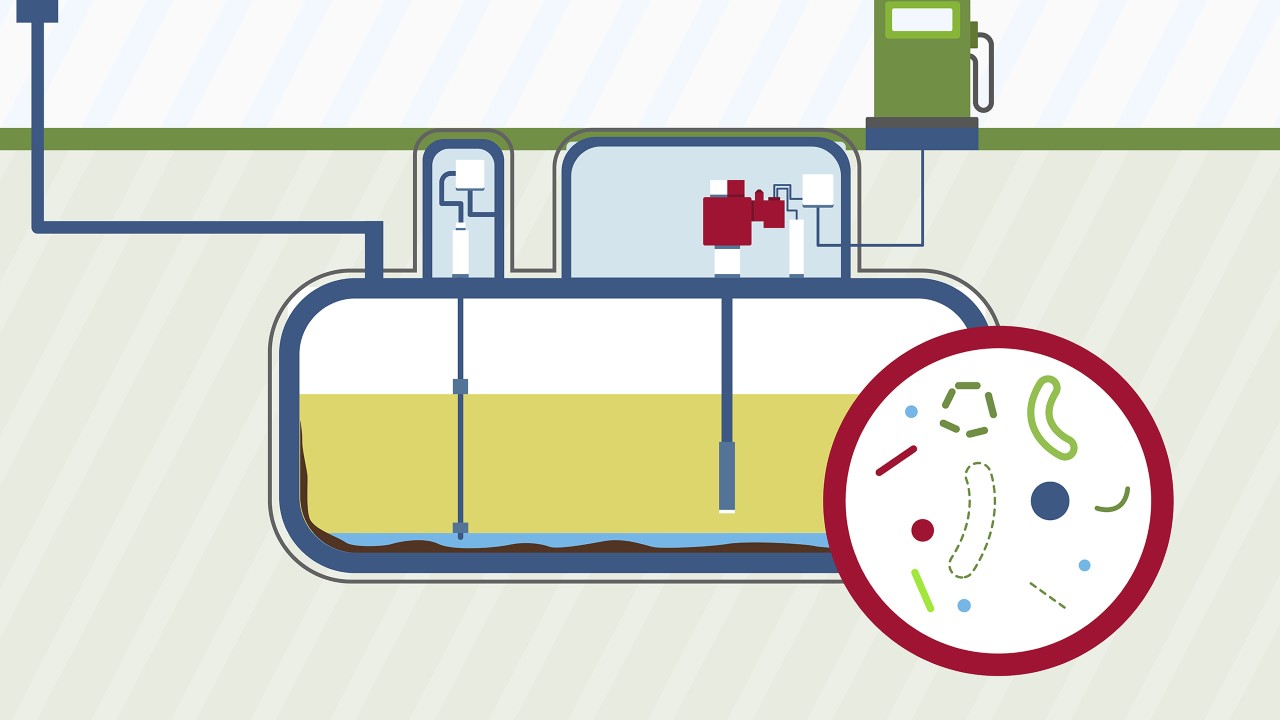
Learn more about the effect of corrosion on the UST environment.
View our recent webinar on Managing Corrosion In Your Diesel Tanks
* Noria Corporation, Machinery Lubrication. (Accessed June 23, 2020) Acid Number: A Comprehensive Guide: https://www.machinerylubrication.com/Read/1052/acid-number-test

